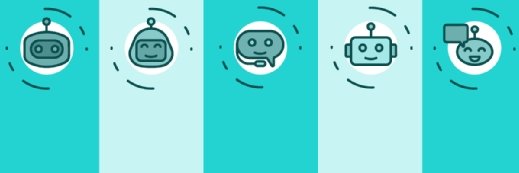
ipopba - Fotolia
SAP touts Business Suite as key to enterprise AI
The German software giant pitched its Business Suite set of integrated applications for the AI era, along with the SAP Joule copilot as the future orchestrator of business workflows, at its customer conference in Melbourne
German software giant SAP is pitching its Business Suite set of integrated applications as the necessary foundation for enterprises to succeed with artificial intelligence (AI), arguing that a fragmented data landscape is the biggest barrier to progress.
With Business Suite, a “best of suite” bundle of business applications that integrate data, processes and functions for areas such as sales and finance, SAP is mounting a direct challenge to the “best-of-breed” model, where organisations assemble a host of fragmented applications from different suppliers.
Stephan de Barse, SAP’s global Business Suite leader, contended that the best-of-breed model is ill-suited for AI. “A landscape of fragmented applications creates fragmented data, which loses business context when pulled into a data lake for analysis, making it harder to operate effectively,” he said. “There is no good AI if we don’t fix the data.”
According to de Barse, this fragmentation means organisations spend around 80% of their time and effort managing applications and data, leaving just 20% for delivering business value.
Instead, SAP is promoting its “flywheel” concept, where AI, data and applications work together in a virtuous cycle. By keeping data and applications tightly integrated within Business Suite, SAP believes it can preserve the context needed for AI to generate meaningful and actionable insights.
To illustrate this future, SAP demonstrated how its AI copilot, Joule, could become the central point of interaction for users. “Users will no longer log into applications. Instead, Joule will be the front end and will orchestrate workflows across multiple parts of the SAP suite,” said de Barse.
For example, a task like responding to a new customer order, which currently involves manual interactions with manufacturing and finance systems, could be handled through a single conversational request to Joule, which would then execute the necessary actions in the background software.
SAP is also developing AI agents for various operational functions, from assisting shop floor managers in recovering from a power outage to helping less experienced staff compensate for absent colleagues. De Barse noted that some customers are already beginning to include these agents in their organisational charts.
“The first eight agents are already with customers, and that will grow to 40 by the end of the year,” he said. “This development is growing very fast. It’s a massive paradigm shift in enterprise software.”
Customers put AI strategy into practice
At the SAP Now conference in Melbourne, several SAP customers shared how they are harnessing AI, balancing initial exploration with targeted projects that deliver tangible results.
SA Power Networks (SAPN), the electricity distributor for South Australia, is using AI to improve asset management and customer service. Travis Smith, SAP domain architect at SAPN, said the company’s philosophy is to “go slow so you can go fast” by ensuring the right foundational building blocks are in place before scaling projects.
SAPN has also used SAP’s Business Technology Platform (BTP) to develop a predictive analytics model for Stobie pole corrosion. With over 600,000 of the distinctive power poles across the state, the model helps SAPN move to a risk-based inspection schedule.
“The question is which [poles] should be scheduled for inspection?” said Muen Chen, data and decision science manager at SAPN. By identifying areas where corrosion is more likely, inspections can be targeted more effectively.
Smith and Chen offered practical advice for others on their AI journey, underscoring the importance of a centralised identity system when using Joule across multiple applications. They noted that Joule can struggle to interpret data presented in tables, requiring information to be formatted differently in source documents.
Sigma Healthcare, which recently merged with Chemist Warehouse, is using SAP SuccessFactors and BTP to automate complex HR processes. Danielle Di Pilla, its chief people officer, said automation saves 70% of the time previously needed to generate around 1,000 employee contracts a month, a process complicated by state-specific regulations.
Meanwhile, other organisations are proceeding cautiously. Chris Youness, chief of people and culture at the City of Sydney, said the city is still in the “hype phase” for AI. “Show us the business case and then we can investigate,” he said, adding that the technology is “not mature enough yet” to meet all expectations.
However, Youness sees clear potential for AI to draft complex documents like skills frameworks, a task that currently takes months or is outsourced to consultants. The key, he said, is keeping a human in the loop. “It still requires human eyeballs,” he observed. “It will be built by us, for us, via the AI.”
Shaun Black, acting CIO at Energy Queensland, said his organisation has been using machine learning and other AI technologies, and that it is a question of when – not if – generative AI will be adopted.
However, as the energy industry is heavily regulated, his organisation is focusing on responsible AI frameworks and targeted pilots. He argued that organisations should not treat AI as an afterthought but should be “designing for AI” from the start.
“We’ve been curious but cautious about the uptake of AI,” said Black. He predicted that just as AI has become an invisible part of consumer applications, it will eventually become an integrated and assumed component of business software.
Read more about AI in ANZ
- At the Oracle CloudWorld Tour in Sydney, Oracle executives talked up the company’s strategy to integrate AI across its entire technology stack, empowering Australian businesses to move beyond experimentation and into practical AI-driven solutions.
- Air New Zealand has inked a five-year deal with Tata Consultancy Services to overhaul its digital infrastructure and place AI at the heart of its operations.
- CommBank plans to accelerate the integration of AI into its business after completing a year-long migration of its data platform to AWS.
- Snowflake showcased how its platform simplifies data management, reduces costs and drives AI adoption for Australian businesses.











